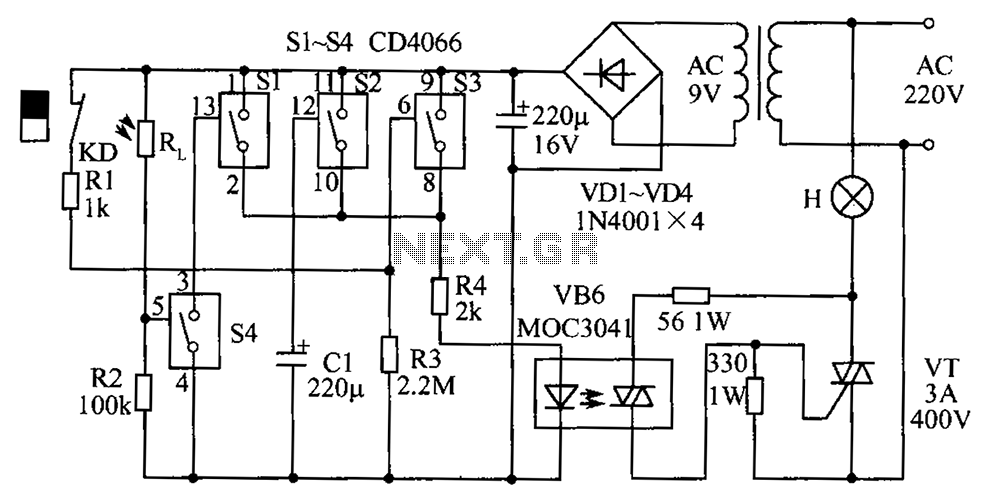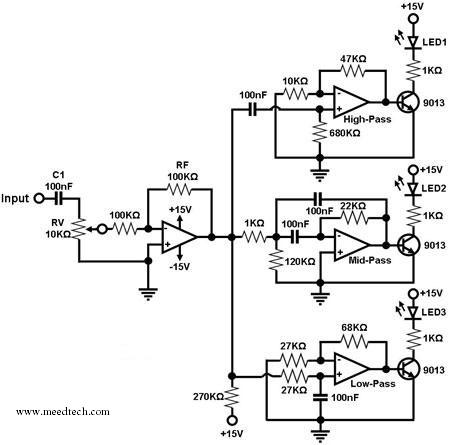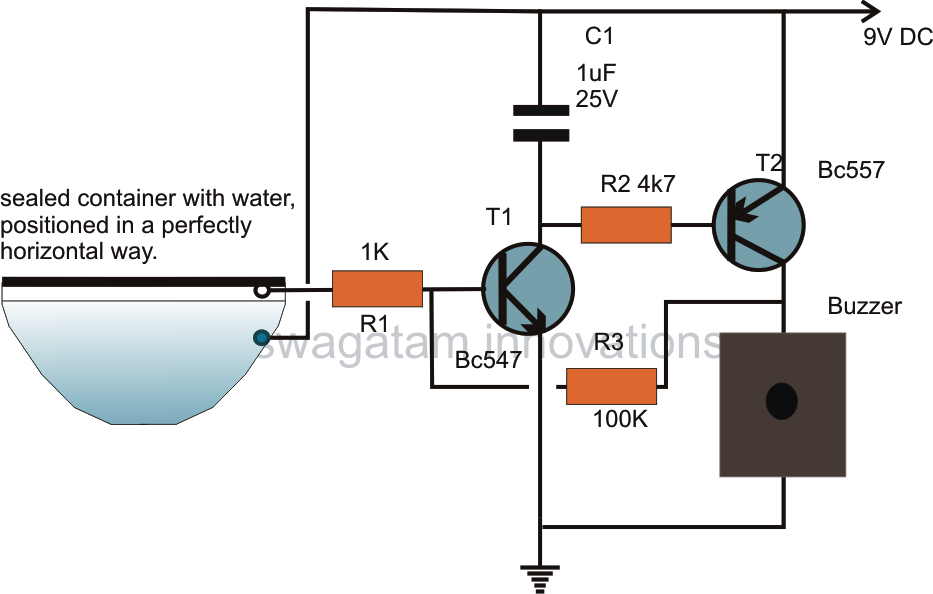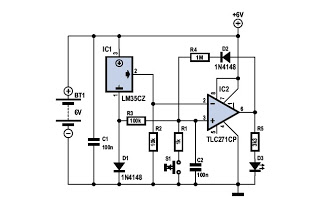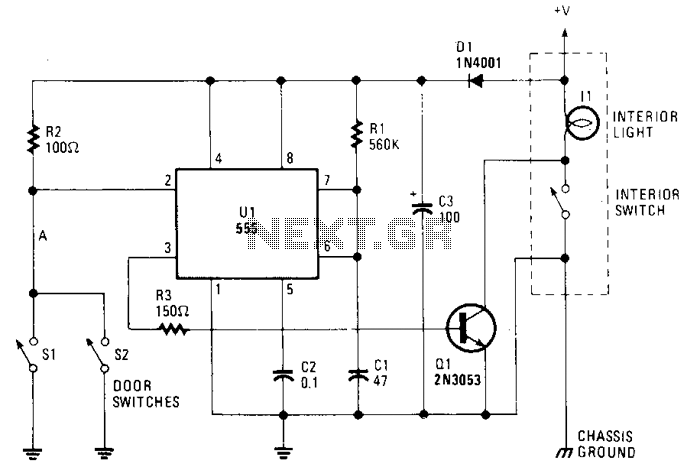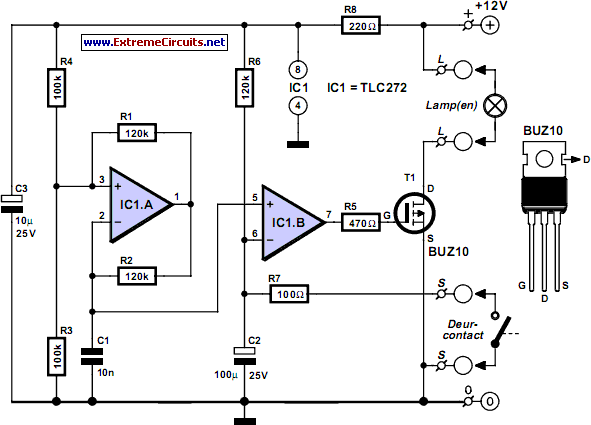
light sensor

When connecting this element in a voltage divider configuration, a high and low signal can be generated based on the amount of light detected by the sensor. An NPN transistor configured as an inverter further filters this signal to produce a purely digital output. This circuit enables the generation of a binary signal, either 1 or 0, corresponding to whether the sensor is exposed to light or in shadow. The sensitivity of the sensor to light is determined by resistor R, which is part of the voltage divider with the light-dependent resistor (LDR). Eagle is a powerful tool that simplifies the design of complex circuits. Designing a circuit in Eagle is significantly more straightforward than working with a breadboard and trial-and-error methods. Upon creating a new schematic, the initial task is to add components to the circuit using the "add devices" button. The first component to assemble is the power supply to ensure a stable voltage across the circuit. A positive voltage regulator in a TO-220 package is recommended due to its affordability, ease of use, and ability to manage heat effectively, often featuring a mounting hole for a heat sink. After selecting the desired component, it can be added to the circuit. The power supply requires two capacitors, a voltage regulator, and inputs from the voltage source. Following component placement, connections must be made using the wire hookup tool, linking all parts as typically done in circuit design. It is crucial to use the node tool at junctions where devices connect, as mere contact between a wire and a device does not establish a link. Properly linked nodes are essential to avoid issues in the PCB design stage. The GND and VCC symbols represent common points in the circuit, with the GND symbol indicating ground connections. This schematic design approach enhances clarity and allows for the modular modification of circuit sections. The power supply provides a known potential, utilizing a 5-volt positive voltage regulator that delivers a steady 5 volts at the output, irrespective of input voltage (as long as it is DC and within specifications). The two capacitors serve as filters, eliminating noise that may be present on the line. In this configuration, the capacitors are classified as decoupling or bypass capacitors, functioning as a type of low-pass filter.
The described circuit operates effectively in applications where light detection is essential, such as in automated lighting systems or security alarms. The voltage divider configuration with the LDR allows for the detection of varying light levels, translating these variations into digital signals through the NPN transistor inverter. The choice of a 5-volt regulator is advantageous for compatibility with various microcontrollers and digital logic circuits, ensuring that the output remains stable under different load conditions.
In the schematic design process using Eagle, the systematic addition of components facilitates the organization of the circuit layout. The use of symbols for GND and VCC streamlines the design, making it easier for engineers to visualize connections and maintain clarity. The decoupling capacitors play a critical role in maintaining signal integrity by smoothing out voltage fluctuations and preventing unwanted noise from affecting the performance of the circuit.
Overall, the integration of these components and their configuration not only enhances the functionality of the light detection circuit but also ensures that the design process is efficient and manageable, ultimately leading to a reliable and effective electronic solution.When we hook up this element in a voltage divider configuration, we can make a high and low signal based upon how much light hits the sensor. This is further filtered by using an NPN transistor in an inverter configuration to generate a purely digital signal.
This circuit allows you to produce a 1 or a 0 that correlates to whether the sensor is su bjected to light or is in shadow. The amount of light that triggers the sensor is based on resistor R. (the resistor hooked up in the voltage divider with the LDR) Eagle is a very powerful tool and can make designing complicated circuits a breeze. Its much easier to draw a circuit out on eagle than to fumble around with a breadboard guessing and checking along the way.
This is what comes up once you create a new schematic. Your first job is to start adding devices to your circuit. This is done by pressing the add devices button. You can begin typing what part you need, first thing we`re going to do is assemble the power supply so we have a steady potential across our circuit. We want a positive voltage regulator in a TO-220 package. A TO-220 package is fairly common package as its cheap and very easy to work with and we don`t have to worry about overheating too much because the package can handle a lot of heat.
Most of the time as well the package has a mounting hole for a heat sink a swell. Once we select the part we want we can add it to our circuit. For the power supply were going to need two capacitors and a voltage regulator as well as inputs for our voltage from our source. Once we place all the parts we have to hook everything up. For this, we use the wire hookup tool. We link all the parts like we normally would in a circuit with wire. We have to take one more step however, we have to use the node tool at any junction where two devices connect.
Just because a wire and a device touch, doesn`t mean they`re linked. We must use the node tool to link the devices and make a connection. This is very important as unlinked nodes will produce an improper PCB design when we eventually get to that stage. One thing you`ll notice is the GND and VCC "devices. " These are symbols we use to note common points in the circuit. We use a GND symbol to denote the ground. Therefore, any point in the circuit that connects the ground, connects to this symbol. This way of designing our schematic makes things look cleaner and allows us to separate functioning parts of our circuit into blocks that can be modified separately.
The power supply provides us with a known potential. When building this circuit we are going to use a 5 volt positive voltage regulator, which on the output gives us a steady 5 volts irregardless of the input voltage (assuming its DC and within specs). The two capacitors act as filters, filtering out noise that might be introduced on our line. The capacitors in that configuration are called decoupling/bypass capacitors and are a type of low pass filter.
🔗 External reference
The described circuit operates effectively in applications where light detection is essential, such as in automated lighting systems or security alarms. The voltage divider configuration with the LDR allows for the detection of varying light levels, translating these variations into digital signals through the NPN transistor inverter. The choice of a 5-volt regulator is advantageous for compatibility with various microcontrollers and digital logic circuits, ensuring that the output remains stable under different load conditions.
In the schematic design process using Eagle, the systematic addition of components facilitates the organization of the circuit layout. The use of symbols for GND and VCC streamlines the design, making it easier for engineers to visualize connections and maintain clarity. The decoupling capacitors play a critical role in maintaining signal integrity by smoothing out voltage fluctuations and preventing unwanted noise from affecting the performance of the circuit.
Overall, the integration of these components and their configuration not only enhances the functionality of the light detection circuit but also ensures that the design process is efficient and manageable, ultimately leading to a reliable and effective electronic solution.When we hook up this element in a voltage divider configuration, we can make a high and low signal based upon how much light hits the sensor. This is further filtered by using an NPN transistor in an inverter configuration to generate a purely digital signal.
This circuit allows you to produce a 1 or a 0 that correlates to whether the sensor is su bjected to light or is in shadow. The amount of light that triggers the sensor is based on resistor R. (the resistor hooked up in the voltage divider with the LDR) Eagle is a very powerful tool and can make designing complicated circuits a breeze. Its much easier to draw a circuit out on eagle than to fumble around with a breadboard guessing and checking along the way.
This is what comes up once you create a new schematic. Your first job is to start adding devices to your circuit. This is done by pressing the add devices button. You can begin typing what part you need, first thing we`re going to do is assemble the power supply so we have a steady potential across our circuit. We want a positive voltage regulator in a TO-220 package. A TO-220 package is fairly common package as its cheap and very easy to work with and we don`t have to worry about overheating too much because the package can handle a lot of heat.
Most of the time as well the package has a mounting hole for a heat sink a swell. Once we select the part we want we can add it to our circuit. For the power supply were going to need two capacitors and a voltage regulator as well as inputs for our voltage from our source. Once we place all the parts we have to hook everything up. For this, we use the wire hookup tool. We link all the parts like we normally would in a circuit with wire. We have to take one more step however, we have to use the node tool at any junction where two devices connect.
Just because a wire and a device touch, doesn`t mean they`re linked. We must use the node tool to link the devices and make a connection. This is very important as unlinked nodes will produce an improper PCB design when we eventually get to that stage. One thing you`ll notice is the GND and VCC "devices. " These are symbols we use to note common points in the circuit. We use a GND symbol to denote the ground. Therefore, any point in the circuit that connects the ground, connects to this symbol. This way of designing our schematic makes things look cleaner and allows us to separate functioning parts of our circuit into blocks that can be modified separately.
The power supply provides us with a known potential. When building this circuit we are going to use a 5 volt positive voltage regulator, which on the output gives us a steady 5 volts irregardless of the input voltage (assuming its DC and within specs). The two capacitors act as filters, filtering out noise that might be introduced on our line. The capacitors in that configuration are called decoupling/bypass capacitors and are a type of low pass filter.
🔗 External reference
Warning: include(partials/cookie-banner.php): Failed to open stream: Permission denied in /var/www/html/nextgr/view-circuit.php on line 713
Warning: include(): Failed opening 'partials/cookie-banner.php' for inclusion (include_path='.:/usr/share/php') in /var/www/html/nextgr/view-circuit.php on line 713
